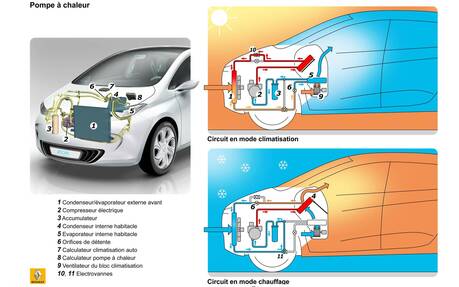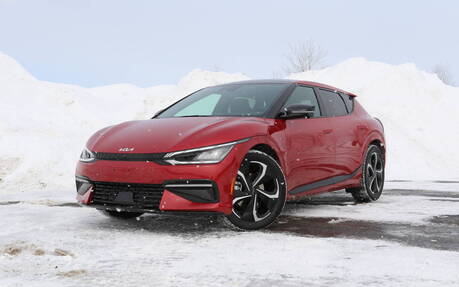What's an Electric Car Heat Pump?
Many potential EV buyers are concerned about battery degradation and range loss in cold weather. Indeed, winter driving and charging habits are not at all the same as in summer …
The Quebec Electric Vehicle Association (AVEQ) has calculated that the average range drops by about 25% at -15 degrees and by nearly 50% at -25 degrees.
That said, not all models were created equal. Some can handle cold temperatures better than others. For example, they can be equipped with a heat pump and an efficient battery management system, which allow to drive longer distances in winter while keeping the occupants warm.
But what exactly is an electric car heat pump?
Like your house’s heat pump, this system basically consists of a compressor, an evaporator and a condenser. It absorbs waste heat from electrical components such as the motors, chargers, inverters and battery to lower electricity consumption when the heater is on.

More precisely, the system uses the heat generated by the various components to evaporate the coolant. Ejected from the compressor under high pressure, the gas is then sent to the condenser, where it returns to a liquid state. This process produces thermal energy, which is recovered by the heat pump and used to heat the cabin.
According to various estimates, a heat pump in an electric vehicle can prevent a range loss between 10 and 15%, which is far from negligible. As with domestic heat pumps, however, its usefulness is reduced in extreme cold (-10 degrees Celsius and below) and you’ll need to use conventional heating to keep the cabin at the desired temperature.
